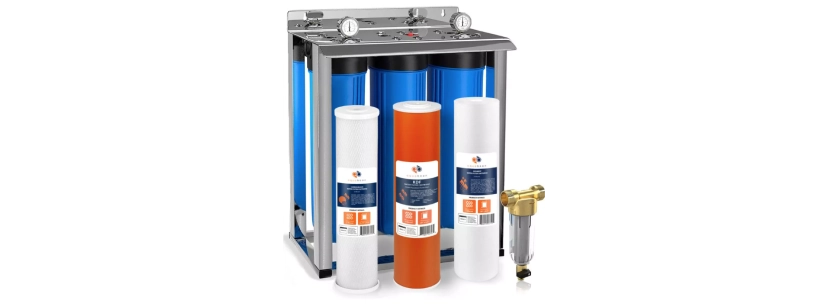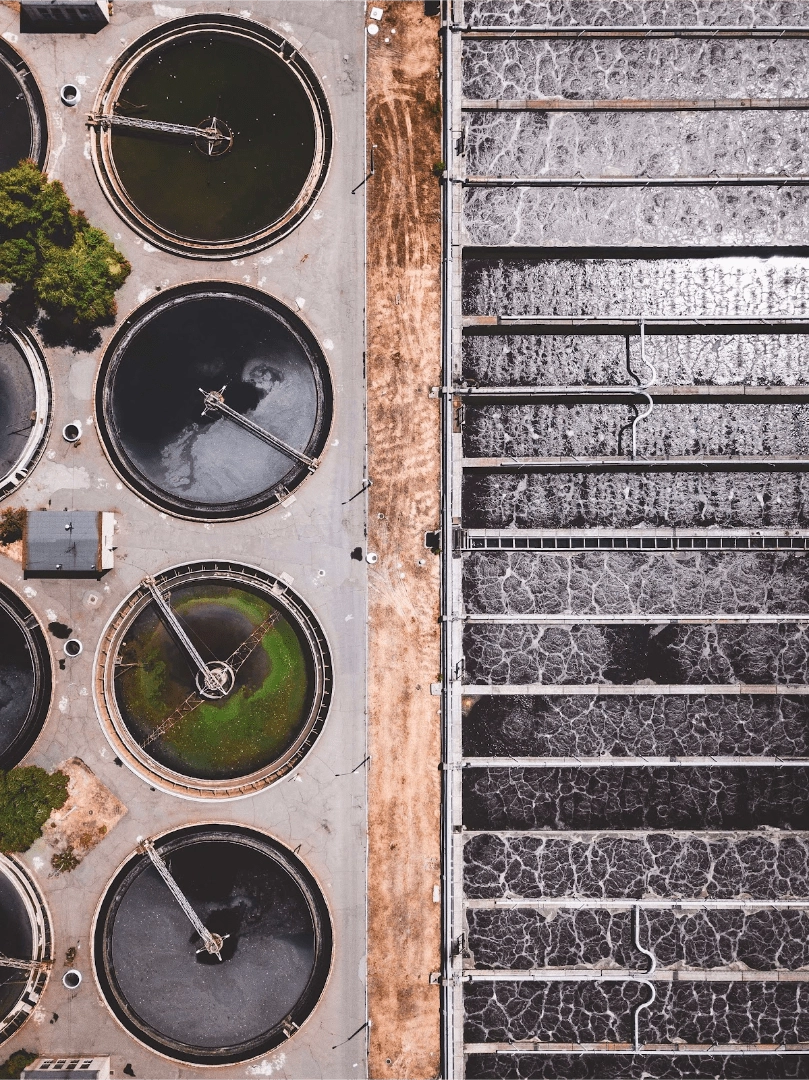Iron and lead are two common contaminants found in drinking water that can pose serious health risks and affect the taste and appearance of the water. While iron is an essential mineral for the human body, its presence in water can lead to a rusty appearance and metallic taste. Lead, on the other hand, is a toxic substance that can lead to a range of health issues, including developmental problems, cancer risk, and damage to various organs.
Iron and Lead Water Treatment
Why Iron and Lead in Water Are a Serious Concern
Iron is a naturally occurring element found in soil, rocks, and groundwater. In small amounts, iron in drinking water is not a health hazard, but it can cause unpleasant taste, staining, and plumbing issues. However, high iron in water can encourage the growth of certain bacteria, leading to biofilm buildup in your pipes and water fixtures.
Lead is a toxic heavy metal that has no safe level in drinking water according to the U.S. Environmental Protection Agency (EPA). Lead in water can damage the nervous system, particularly in children, and may lead to developmental delays, behavioral problems, and other long-term health issues.
Key health and home concerns:
- Iron: Rust stains on fixtures, metallic taste, clogged pipes, and increased bacterial growth.
Lead: Irreversible neurological damage, kidney problems, high blood pressure, and serious health risks for pregnant women and children.
Common Sources of Iron and Lead in Tap Water
Iron and lead can enter your home water supply in different ways. Knowing their sources will help you choose the right treatment.
Common sources of iron in tap water:
- Natural deposits in groundwater
- Corroding iron pipes or well casings
- Iron bacteria growth in wells
- Municipal water system corrosion
Common sources of lead in drinking water:
- Lead service lines connecting homes to the municipal water supply
- Corroded brass or chrome-plated brass faucets and fixtures
- Lead solder used in copper plumbing before 1986
- Plumbing systems exposed to corrosive water with low pH
Signs You Might Have Iron or Lead in Your Water
Iron is easier to detect without testing because it often changes the look, smell, or taste of your water. Lead, on the other hand, is invisible and has no taste or smell — making it more dangerous because you may not know it’s there until you test.
Signs of iron in tap water may include:
- Reddish-brown or yellow stains on sinks, tubs, and toilets
- Metallic taste in water or beverages made with it
- Cloudy or rusty water coming from faucets, especially after periods of non-use
- Unusual smell, sometimes described as earthy or musty
- Clogging in appliances like dishwashers and washing machines
Signs of lead in water are trickier:
- There are no direct sensory clues (you can’t see, smell, or taste it)
- Older homes built before 1986 with original plumbing are at higher risk
Water samples from kitchen taps in older buildings often reveal lead levels in water above EPA action limits
Testing for Iron and Lead in Your Drinking Water
Testing is the only reliable way to determine if you have iron in water or lead in drinking water.
How to test for iron:
- DIY water test kits — Available at hardware stores, these can detect total iron content.
- Laboratory testing — Offers precise readings for dissolved and particulate iron.
- Well inspections — If you’re on well water, periodic checks can detect high iron in water early.
How to test for lead:
- Certified lab testing — The EPA recommends using certified laboratories for accurate results.
- Local water utility testing — Many utilities offer free or low-cost testing for residents.
First-draw sampling — Take samples after water has been sitting in pipes for several hours to measure worst-case lead levels in water.
Is Iron Water Soluble? Understanding Iron Types
When people ask, “Is iron water soluble?” the answer depends on the type of iron:
- Ferrous iron (soluble) is dissolved in the water and clear when drawn from the tap but turns reddish after standing as it oxidizes.
- Ferric iron (insoluble) is already oxidized, causing water to appear rusty or cloudy.
- Organic-bound iron is complexed with organic matter, making it harder to remove.
The type of iron present affects which iron water treatment method will work best.
Iron Water Treatment for Home
Iron often finds its way into groundwater sources, and even a small contamination of 0.3 mg/l can affect the water's appearance and taste. Thankfully, there are several methods to treat iron water at home:
- Water Softeners: These work by exchanging the iron molecules with sodium ions, reducing impurities.
- Reverse Osmosis System: This method pushes water through semi-permeable membranes, catching and removing iron molecules.
- Iron Filter Methods: These use a chemical reaction to oxidize the iron molecules, making them easier to filter out.
Iron purification systems, such as carbon water filters, are available as whole-house systems or point-of-use systems, depending on your needs. Brands like Filterway offer eco-friendly, odor-free iron water treatment cartridges with an anti-corrosion coating.
Risks of Metals in Water:
- Health risks of iron (e.g., metallic taste, staining)
- Health risks of lead (e.g., developmental issues, cancer risk)
Iron Water Treatment Methods:
- Water softeners
- Reverse osmosis systems
- Iron filter methods
Lead Water Treatment Methods:
- Reverse osmosis
- Activated carbon filtration
- Distillation
- Ion exchange
Lead Water Filtration for Home
Lead poisoning is a serious concern, with the World Health Organization reporting approximately 1 million deaths annually due to lead exposure. In the U.S., a substantial percentage of the population has been exposed to excessive levels of lead in drinking water.
Lead can enter water supplies from corroded pipes and fixtures, and its presence in the body can lead to various physical and mental health symptoms. Here's how to treat lead in water:
- Reverse Osmosis: This process forces water through a membrane, removing dissolved solids and contaminants, including 99.1% of lead.
- Distillation: This involves heating the water, making contaminants evaporate and be removed, leaving clean water.
- Activated Carbon Filtration: This method uses activated carbon to trap particles, preventing them from entering the drinking water.
- Ion Exchange: This system uses a resin to remove contaminants, including lead.
Preventing Future Contamination
For iron:
- Regularly inspect and maintain private wells and pumps.
- Flush plumbing lines after long periods of disuse.
For lead:
- Use only cold water for drinking and cooking (hot water can leach more lead).
- Run tap water for 30–60 seconds before using if water has been sitting in pipes.
- Replace outdated plumbing materials
Conclusion
Both iron and lead in drinking water require careful attention and treatment to ensure the safety and quality of the water. By understanding the available treatment methods and investing in quality filtration systems, you can protect your family's health and enjoy clean, pure water. Whether it's iron's rusty appearance and metallic taste or lead's toxic effects, proper filtration is the key to safe and enjoyable drinking water.
Where to Buy the Best Filters?
Filterway.com is a reliable source for both iron and lead water treatment systems. They offer a wide selection of cartridges and systems that are easy to install and come with a satisfaction guarantee.






